A wasting trust refers to a type of trust arrangement in which the assets held within the trust are gradually depleted or "wasted" over time. This is in contrast to a traditional trust structure, where the assets are intended to be preserved or maintained for the beneficiaries. In a wasting trust, the assets may be used to fulfill a specific purpose or provide for the immediate needs of the beneficiaries. This type of trust is typically established when there is a finite duration or purpose for which the assets are to be utilized, and the trust document will specify the conditions and timeline for the depletion of the assets. In a Discretionary Wasting Trust, the trustees have complete control over how the trust's assets are distributed to beneficiaries. They can decide who receives benefits when they receive them, and how much they receive. This type of trust provides a high level of flexibility and can be beneficial in situations where the beneficiaries' needs are uncertain or may change over time. An Interest in Possession Wasting Trust allows a beneficiary to receive income from the trust assets for a specified period or for their lifetime. The trustees have limited discretion in this type of trust, as they must distribute the income to the designated beneficiary. However, the trustees retain control over the trust's capital, which can be distributed to other beneficiaries at the trustees' discretion. This type of Wasting Trust is designed to provide for the education, maintenance, and support of beneficiaries, typically children or young adults. The trust income is accumulated and invested by the trustees, who can distribute it to beneficiaries for specific purposes, such as paying for education or covering living expenses. Once the beneficiaries reach a certain age or achieve a specific milestone, they may become entitled to receive the trust capital. A Protective Wasting Trust is designed to safeguard assets from potential claims by creditors or other parties. In this type of trust, a beneficiary's interest can be forfeited if they become bankrupt or face other financial difficulties. This feature helps protect the trust's assets and ensures they remain available for the intended beneficiaries. The settlor is the person who creates and funds the Wasting Trust. They are responsible for choosing the type of trust, appointing trustees, and outlining the trust's terms in the trust instrument. Trustees are responsible for managing the Wasting Trust's assets and ensuring they are distributed according to the trust's terms. They have a fiduciary duty to act in the best interests of the beneficiaries and must adhere to the trust's terms and relevant trust law. The beneficiaries are the individuals or organizations that benefit from the Wasting Trust's assets. They can receive income, capital, or both from the trust, depending on its terms. The trust assets are the property and other assets held in the Wasting Trust. They can include cash, investments, real estate, and other tangible or intangible property. The trust instrument is the legal document that outlines the terms and conditions of the Wasting Trust. It specifies the trust's purpose, the powers and responsibilities of the trustees, and the rights of the beneficiaries. Before establishing a Wasting Trust, the settlor must determine its purpose. This could include providing for the financial needs of family members, protecting assets from creditors, or supporting a charitable cause. Once the purpose has been identified, the settlor must choose the most appropriate type of Wasting Trust to achieve their objectives. This decision should be based on factors such as the intended beneficiaries' needs, the desired level of control and flexibility, and the tax implications of each trust type. The trust instrument is the legal document that sets out the terms and conditions of the Wasting Trust. It should be drafted by an experienced attorney to ensure it accurately reflects the settlor's intentions and complies with relevant trust law. The settlor must appoint one or more trustees to manage the Wasting Trust's assets. Trustees should be chosen carefully, as they will have a significant impact on the trust's management and the beneficiaries' well-being. The settlor may appoint themselves as a trustee, but they should also consider appointing independent trustees with expertise in trust management and relevant legal and financial matters. The final step in establishing a Wasting Trust is transferring the trust assets to the trustees. This process may involve retitling assets, executing deeds, or making cash transfers, depending on the nature of the assets and the trust's terms. Wasting Trusts are subject to income tax on the income they generate. The tax treatment of trust income depends on the type of trust and the jurisdiction in which it is established. In some cases, the trust may be taxed at the trust level, while in others, the income may be taxed in the hands of the beneficiaries. Capital gains tax may apply to gains realized on the disposal of trust assets. The tax treatment of capital gains depends on the type of trust and the jurisdiction in which it is established. In some cases, the trust may be liable for capital gains tax, while in others, the liability may be passed on to the beneficiaries. Inheritance tax may apply to assets held in a Wasting Trust, depending on the trust's terms and the jurisdiction in which it is established. In some cases, the trust may be subject to inheritance tax, while in others, the liability may be passed on to the beneficiaries. Careful tax planning is essential when establishing a Wasting Trust. Settlors should consult with experienced tax professionals to ensure they are aware of the tax implications of their chosen trust type and structure the trust in the most tax-efficient manner possible. Wasting Trusts are governed by trust law, which varies between jurisdictions. Settlors and trustees should familiarize themselves with the relevant trust law to ensure they comply with their legal obligations and protect the trust's assets. Trustees have a fiduciary duty to act in the best interests of the beneficiaries and to manage the trust's assets prudently and in accordance with the trust's terms. Failure to fulfill these duties can result in legal liability for the trustees and potential loss of trust assets. Beneficiaries have certain rights under trust law, such as the right to receive information about the trust's assets and management. Trustees must respect these rights and ensure that they act in the best interests of the beneficiaries at all times. Wasting Trusts can be varied or terminated under certain circumstances, such as a change in the beneficiaries' needs or the settlor's wishes. The trust instrument should set out the procedures for variation and termination, and trustees should follow these procedures carefully to ensure they comply with their legal obligations. Wasting Trusts can be an effective tool for asset protection, as they can help shield assets from potential claims by creditors, former spouses, or other parties. By placing assets in a trust, the settlor effectively removes them from their personal estate, making it more difficult for creditors to access them. Establishing a Wasting Trust can also be a valuable part of incapacity planning. In the event that the settlor becomes incapacitated, the trustees can manage the trust's assets on their behalf, ensuring that their financial affairs are handled in accordance with their wishes and in the best interests of the beneficiaries. Wasting Trusts can be used to support charitable causes by providing a tax-efficient and flexible way to donate assets to charity. By establishing a charitable trust, the settlor can ensure that their assets are used to support their chosen cause, both during their lifetime and after their death. Wasting Trusts can play a significant role in divorce settlements, as they can help protect assets from being divided during the divorce process. By placing assets in a trust, the settlor may be able to ensure that they are not considered part of their marital estate and are not subject to division upon divorce. One common misconception is that Wasting Trusts are only beneficial for wealthy individuals. However, trusts can provide valuable benefits for individuals at various income levels, as they offer a flexible way to manage and protect assets for the benefit of beneficiaries. While Wasting Trusts can offer certain tax advantages, they are not solely used for tax avoidance. Trusts can serve a variety of purposes, such as providing for beneficiaries' financial needs, protecting assets, and supporting charitable causes. Wasting Trusts can be complex, but they are not necessarily expensive to establish and maintain. With the guidance of experienced professionals, it is possible to create a trust that meets the settlor's objectives without incurring significant costs. Another misconception is that Wasting Trusts are inflexible and cannot be changed once they have been established. However, many trusts can be varied or terminated under certain circumstances, allowing the settlor or the trustees to adapt the trust to changing needs and circumstances. Wasting Trust is a type of trust arrangement where assets gradually deplete over time. It is used to fulfill specific purposes or provide for immediate beneficiary needs. Types of Wasting Trusts include Discretionary, Interest in Possession, Accumulation and Maintenance, and Protective Trusts. Key elements of a Wasting Trust include the Settlor (creator and funder), Trustee (manages assets), Beneficiary (receives benefits), Trust Assets, and Trust Instrument (legal document). To establish a Wasting Trust, one must identify its purpose, choose the appropriate type, draft the trust instrument, appoint trustees, and fund the trust. Tax implications include income tax, capital gains tax, and inheritance tax. Legal considerations involve trust law, fiduciary duties of trustees, rights of beneficiaries, and variation/termination of trusts. Wasting Trusts can be used for asset protection, incapacity planning, charitable giving, and divorce settlements. Common misconceptions include exclusivity to the wealthy, only for tax avoidance, complexity and expense, and lack of flexibility.Definition of Wasting Trust
Types of Wasting Trusts
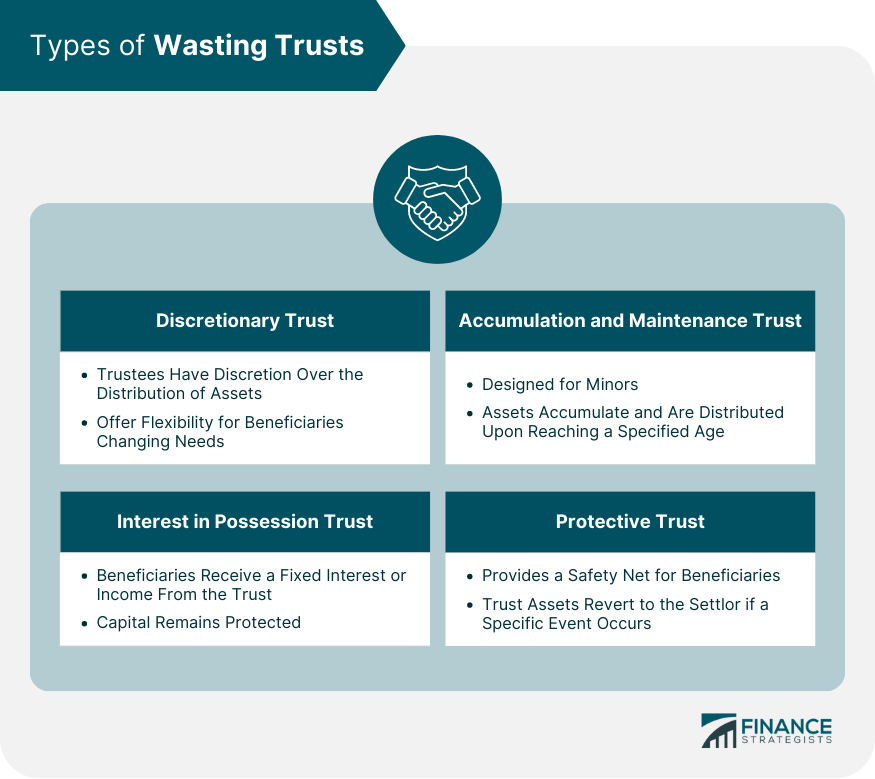
Discretionary Wasting Trust
Interest in Possession Wasting Trust
Accumulation and Maintenance Wasting Trust
Protective Wasting Trust
Key Elements of a Wasting Trust
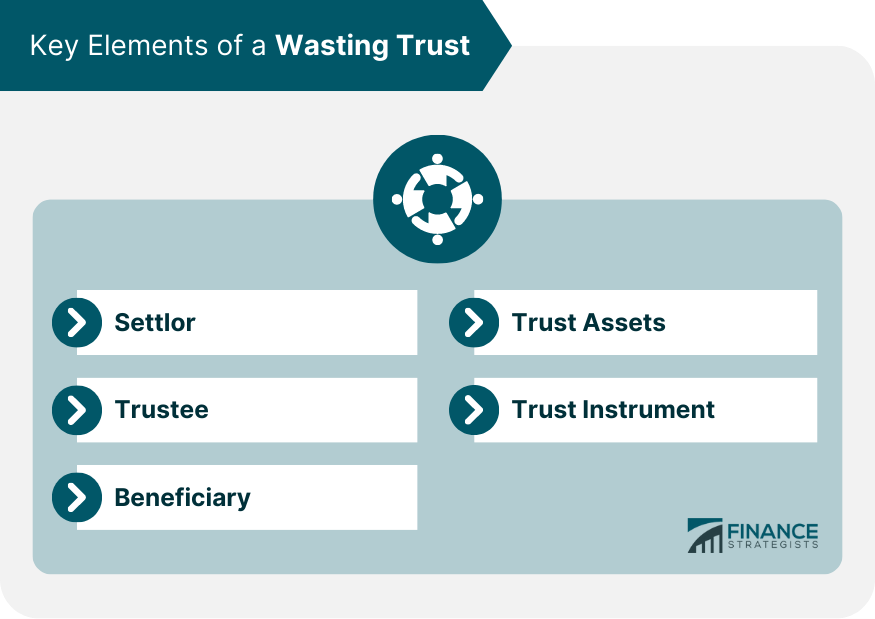
Settlor
Trustee
Beneficiary
Trust Assets
Trust Instrument
Establishing a Wasting Trust
Identifying the Purpose of the Wasting Trust
Choosing the Type of Wasting Trust
Drafting the Trust Instrument
Appointing Trustees
Funding the Wasting Trust
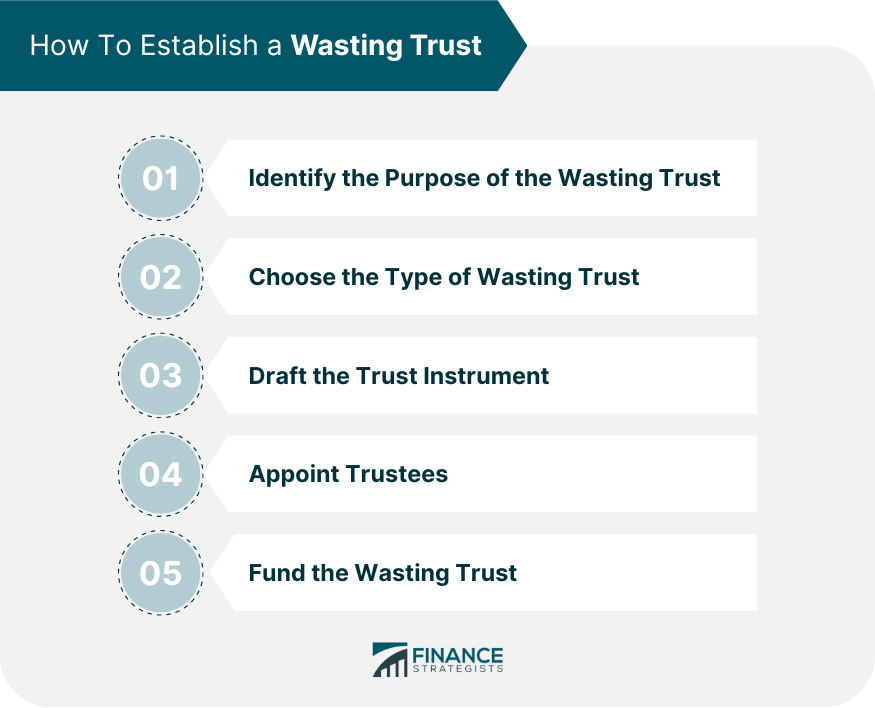
Tax Implications of a Wasting Trust
Income Tax for Wasting Trusts
Capital Gains Tax for Wasting Trusts
Inheritance Tax for Wasting Trusts
Tax Planning Strategies for Wasting Trusts
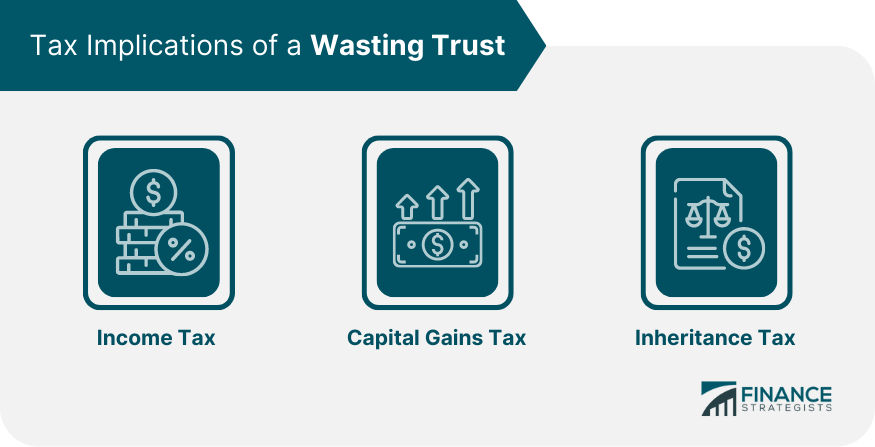
Legal Considerations for Wasting Trusts
Trust Law
Fiduciary Duties of Trustees
Rights of Beneficiaries
Variation and Termination of Wasting Trusts
Wasting Trust and Estate Planning
Tool for Asset Protection
Incapacity Planning
Charitable Giving
Divorce Settlements
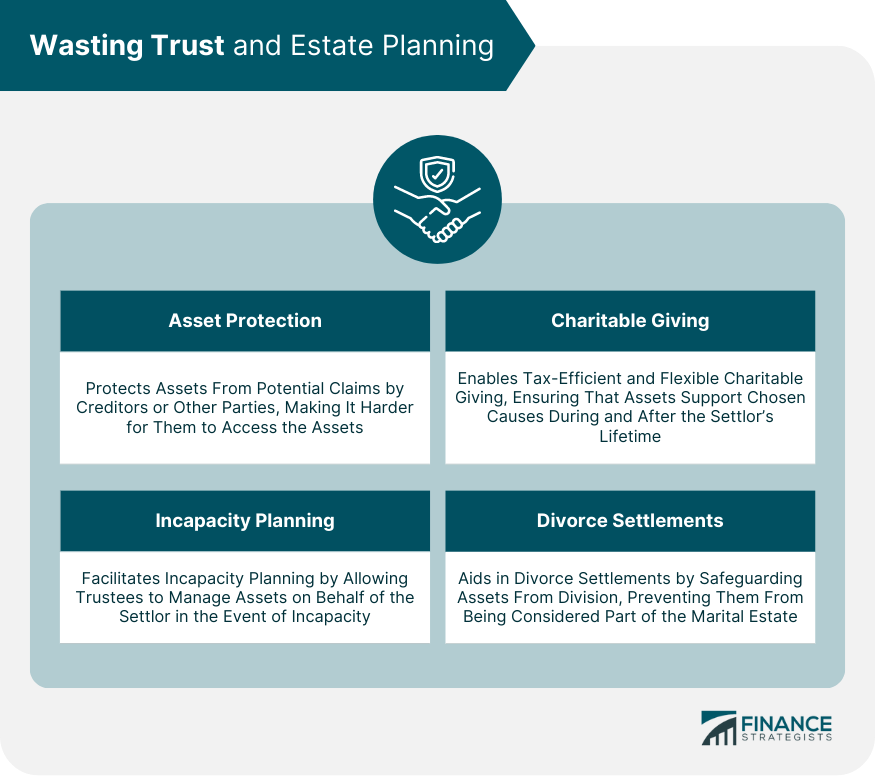
Common Misconceptions About Wasting Trusts
Wasting Trusts Only Benefit the Wealthy
Wasting Trusts are Only for Tax Avoidance
Wasting Trusts are Too Complex and Expensive
Wasting Trusts Cannot Be Changed Once Established
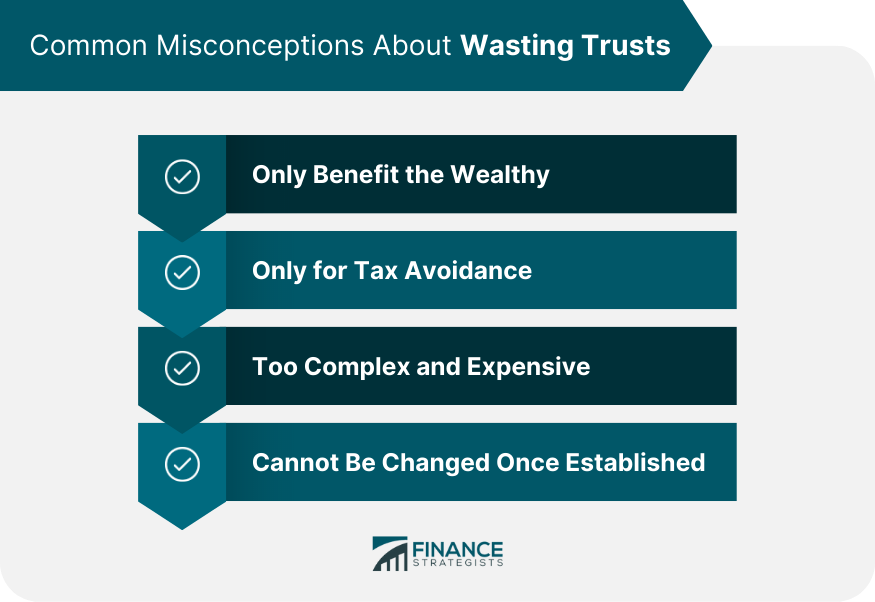
Bottom Line
Wasting Trust FAQs
A Wasting Trust is a legal arrangement that allows individuals to manage and protect their assets effectively for the benefit of beneficiaries. It is important for financial planning as it offers numerous benefits, such as tax planning, asset protection, and estate planning, and can be tailored to meet the specific needs of the settlor and beneficiaries.
A Wasting Trust can protect assets by transferring ownership from the settlor's personal estate to the trust. This makes it more difficult for creditors, former spouses, or other parties to access the assets, as they are no longer considered the settlor's personal property.
Yes, there are several types of Wasting Trusts, including Discretionary, Interest in Possession, Accumulation and Maintenance, and Protective Trusts. The right choice depends on the settlor's objectives, the beneficiaries' needs, and the desired level of control and flexibility. Consulting with an experienced attorney can help you determine the most suitable trust type for your situation.
The tax implications of a Wasting Trust depend on the type of trust and the jurisdiction in which it is established. Trusts may be subject to income tax, capital gains tax, and inheritance tax. It is crucial to work with a tax professional to ensure the trust is structured in the most tax-efficient manner possible.
To avoid common misconceptions about Wasting Trusts, it is essential to understand that they are not solely for the wealthy or for tax avoidance. Wasting Trusts can benefit individuals at various income levels and serve various purposes, such as providing for beneficiaries' financial needs, protecting assets, and supporting charitable causes. Working with experienced professionals can help ensure your Wasting Trust is structured and managed effectively to meet your financial goals.
True Tamplin is a published author, public speaker, CEO of UpDigital, and founder of Finance Strategists.
True is a Certified Educator in Personal Finance (CEPF®), author of The Handy Financial Ratios Guide, a member of the Society for Advancing Business Editing and Writing, contributes to his financial education site, Finance Strategists, and has spoken to various financial communities such as the CFA Institute, as well as university students like his Alma mater, Biola University, where he received a bachelor of science in business and data analytics.
To learn more about True, visit his personal website or view his author profiles on Amazon, Nasdaq and Forbes.











